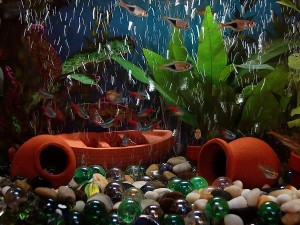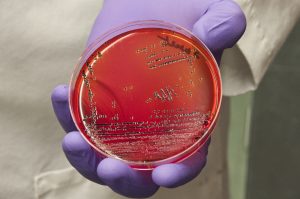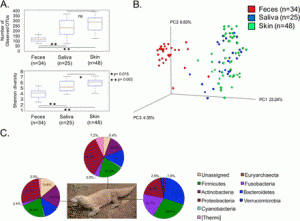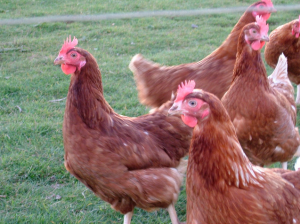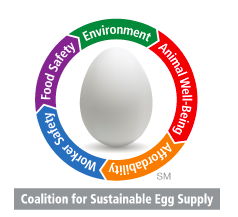Just a quick post here. Studies of the microbiology of built environments that house animals (e.g., aquaria, farms, animal shelters, zoos, etc) are of growing interest for multiple reasons. In that regard this paper might be of interest to some – because it covers some topics that are sometimes neglected in this general area – viral diversity …
So I feel like this shouldn’t need to be said… but clearly it does. Don’t kiss chickens or bring them into your bedroom. Should my opinion not carry enough weight, simply check out this new report from the CDC “Outbreaks of Human Salmonella Infections Associated with Live Poultry, United States, 1990—2014”. Abstract below. Major highlights …
Microbes found in ambulances Not surprisingly, bacteria could be detected after swabbing surfaces in ambulances. Detection and characterization of surface microbial contamination in emergency ambulances – Aketza Varona-Barquin – American Journal of Infection Control ($35.95) A cross-sectional study was performed in 10 emergency basic life support ambulances operating in Bilbao, Spain, to assess surface bacterial …
OK so I love Komodo dragons. I love microbes and microbiomes. And I am an editor at mSystems. So yes I am biased in all sorts of ways about this paper. So with that caveat – I think this is definitely worth a look: The Oral and Skin Microbiomes of Captive Komodo Dragons Are Significantly Shared …
New research findings have provided helpful conclusions to help you become a more conscientious consumer of eggs. As summarized in this news article, findings related to animal health, consumer health, worker health, environmental impact, and affordability are outlined. The three housing types they looked at were battery cages, enriched colony housing (arguably more humane than …
There is an interesting new open access paper on urban ecosystems out in Biology Letters: Exoskeletons and economics: indoor arthropod diversity increases in affluent neighbourhoods | Biology Letters No it is not directly about microbes but nobody’s perfect and many of the arthropods they look at are small and the story about biodiversity is (I …
Just a quick post here. Multiple stories out about the Laying Hen Housing Research Project by the Coalition for Sustainable Egg Supply that maybe of interest. From: Hen housing trade offs: Food safety, workers and consumers | Food Safety News As it turns out, the food stores and restaurant chains promising to sell only cage-free eggs …
Professor Aubrey Tauer of City University of New York, LaGuardia Community College is running an crowdfunding campaign to support research conducted by her non-profit organization to better understand how sea turtle microbiomes vary in captivity and in wild populations. I asked her to write up something for microBEnet about the project. The campaign ends next week, so check it out …
Microbes and the built environment sensu stricto This short review in Trends in Microbiology is open access, very relevant for this blog, and received quite some press. Review: Buildings, Beneficial Microbes, and Health – Jordan Peccia, Sarah E. Kwan – Trends in Microbiology (OA) Bacteria and fungi in buildings exert an influence on the human …
About half the human population now lives in urban environments. In 2008, populations of more developed nations were about 74% urban, while about 44% of residents of less developed countries lived in urban areas. It is projected that 70% of the world population will be urban by 2050, with most urban growth occurring in less developed countries. While there …
